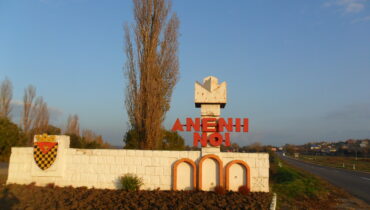Somalia: Drought as the leading cause for displacement in 2017
24 October 2017

Galbeed IDP site in Kismayo, Somalia. © REACH 2018
The longstanding humanitarian crisis in Somalia has been exacerbated by the impact of consecutive seasons of below average rains, since early 2015. Simultaneously an intensification of conflict, particularly in South Central Somalia, has not only aggravated displacement trends and further impeded households’ access to basic services, but has also reduced humanitarian access resulting in a lack of information on population needs and service gaps.
To address these information gaps and support humanitarian actors’ programming needs, REACH conducted a series of rapid assessments in Baardheere, Bulo Burto, Cadale, Dhuusamareeb, Diinsoor, Doolow, Garbahaarey and Luuq districts in the latter part of 2017 within the framework of the Somalia Initial Rapid Needs Assessment (SIRNA). SIRNAs are designed to allow for systematic collection, organisation and analysis of both primary and secondary data in order to provide detailed information of a situation, including a comprehensive needs overview of a population after a disaster is declared. Overall REACH identified substantial increases in drought-induced displacement and acute food insecurity and water shortages.
Drought was the most commonly reported push factor for displacement by the majority of assessed Internally Displaced Persons (IDP) households. In addition, significant proportions of IDP households cited a lack of food and water as secondary push factors, further confirming drought as the leading cause for household displacement.
Nearly all assessed households reported inadequate access to food, reflecting the high levels of food insecurity across Somalia since the start of the drought. This was further reflected in the low quantity and variety of foods consumed by households, as demonstrated by the Food Consumption Score.
Households also reported not having access to an adequate amount of water for household use. Further, they reported relying on surface water sources or unimproved water sources as their primary source of water, raising the risk of contraction of water borne diseases. Relatedly, Acute Watery Diarrhoea (AWD) was consistently cited as a common health problem experienced by households, with most households reporting that at least one household member had experienced AWD in the three months prior to this assessment.
These rapid assessments highlight the impact of the ongoing drought in Somalia and the substantial effect that it has had on displacement and migration flows. With the upcoming Gu rains projected to be below average, the likelihood of the drought continuing is very high, leading to a further deterioration of the humanitarian situation. REACH will continue to support humanitarian actors in Somalia through regular rapid assessments across the country, to provide an evidence base for their responses.










